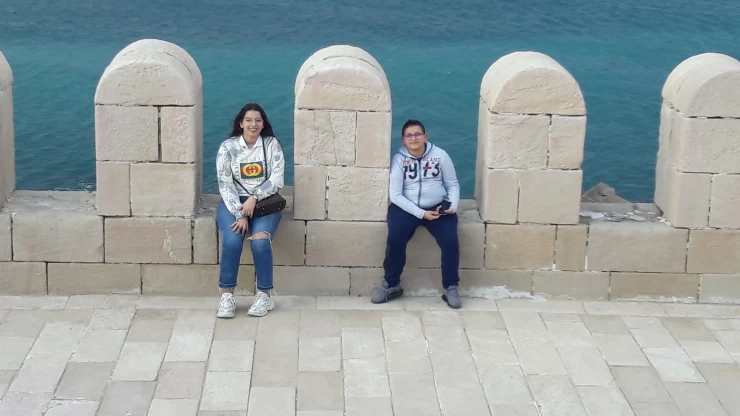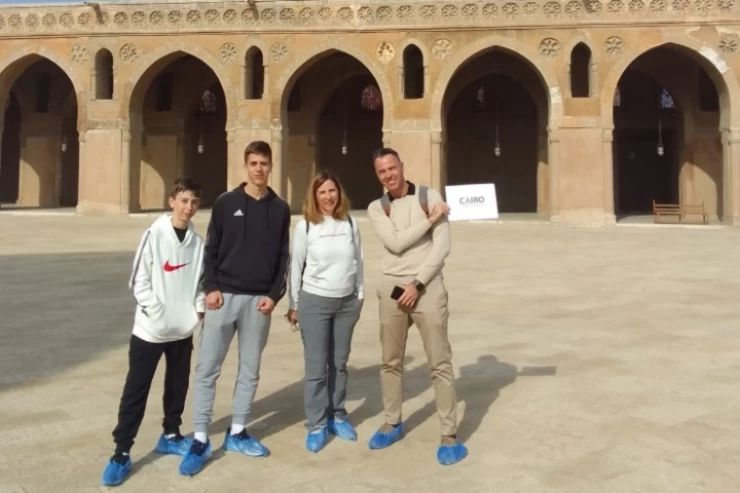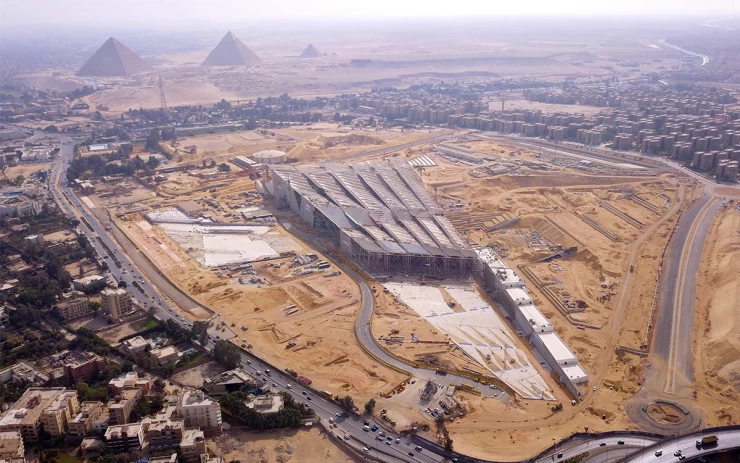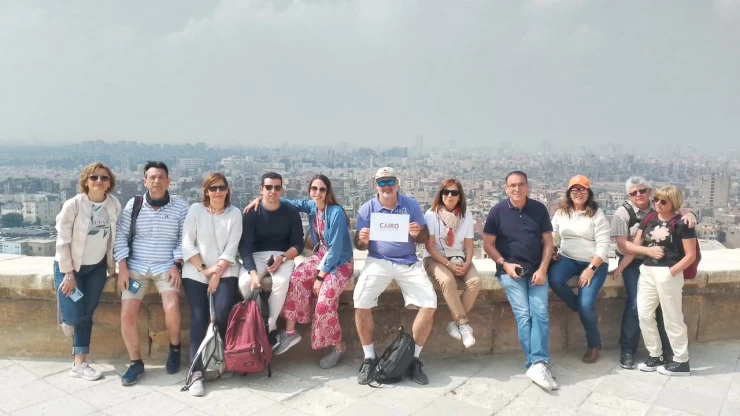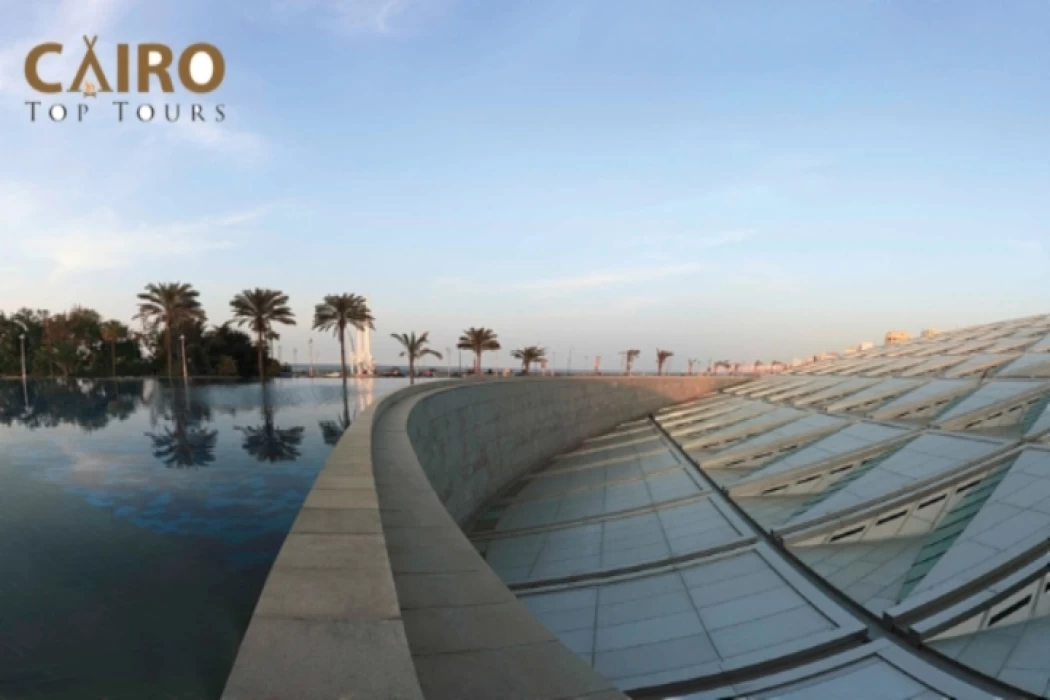
Biblioteca de Alejandría

El mundo nunca tuvo una biblioteca más grande antes de construir la antigua Biblioteca de Alejandría. Situada en la ciudad que le da nombre, frente al mar Mediterráneo, fue fundada al principios del siglo III a.C. por uno de los reyes de la dinastía ptolemaica, Ptolomeo I y ampliada por su hijo Ptolomeo II, y en su reinado de los mayores gloria albergaba más de 900.000 manuscritos. La importancia de la Biblioteca de Alejandría fue disminuyendo en períodos posteriores y la mayoría de los hallazgos se perdieron como resultado de los cambios en las autoridades y las repetidas invasiones.
Su destrucción ha sido atribuida a diferentes actores, pero no se ha probado ninguna versión, lo único claro es que finalmente desapareció y no fue hasta 1987 un proyecto internacional que buscaba rescatar la trascendencia cultural del sitio y el símbolo que representa. comenzó la mítica biblioteca colectiva imaginaria de la humanidad. La UNESCO coordinó el proyecto y finalmente, con el nombre de Biblioteca Alexandrina, se inauguró oficialmente en 1996.
Una oficina de arquitectura noruega estuvo a cargo del proyecto y su decoración muestra bajorrelieves en la fachada que representan caligrafías de muchos idiomas del mundo, su techo circular se relaciona con el dios sol Ra (mitología) y los paneles de vidrio y aluminio reflejan los rayos del sol. sobre el Mediterráneo, parecido al faro de Alejandría.
Además de su inmenso archivo, que puede resistir hasta veinte millones de copias, y un espacio para más de 2.000 académicos simultáneos, también cuenta con un planetario, y un Museo de Ciencias, uno de caligrafía y otro de arqueología, además a un laboratorio de restauración, una moderna imprenta y una biblioteca especializada para niños y personas con habilidades especiales.
Descubra la Bibliotheca de Alejandría y muchos otros monumentos de la ciudad que fue construida por el legendario gobernante macedonio Alejandro Magno en el 332 a.C. reservando la tradicional excursión de un día a Alejandría desde El Cairo para disfrutar del mejor ambiente en todo el país de Egipto.
También puede explorar las pirámides de Giza con un paseo en camello desde Alejandría para aprender sobre la historia de Egipto.
Disfrute de nuestra selección de excursiones por la costa de Alejandría y cosas para hacer en Alejandría, Egipto, si está planeando alguna excursión a Egipto o de nuestra variedad de excursiones desde El Cairo. a través de esta lista:
De nuestros tours de un día a El Cairo, puede tener un tour de Alejandría desde El Cairo
O de nuestros paquetes de viaje a Egipto, puede combinar los paquetes turísticos de El Cairo y Alejandría
No querrá perderse ningún Tour de Alejandría, Egipto desde El Cairo
Y mientras tiene tiempo durante las excursiones por la costa de Egipto, podemos organizar una excursión de un día a El Cairo desde el puerto de Alejandría o una visita a la ciudad de Alejandría desde el puerto.
Un tour de un día a las pirámides de Giza desde Alejandría se encuentra entre nuestros viajes especiales a El Cairo, donde puede encontrar algunos recorridos únicos como el Tour al Cairo islámico desde Alejandría.
Pero si realmente desea cubrir la mayoría de las cosas que hacer en El Cairo, puede reservar un viaje de una noche a El Cairo desde Alejandría.
El tour de El Cairo desde Alejandría, de regreso al puerto, se encuentra entre las excursiones por la costa de Egipto adecuadas para que no se pierda su crucero.
También puede leer mucho sobre Egipto a través de la guía de viajes de El Cairo que también incluye todos los detalles e información necesarios durante el recorrido a las pirámides de Giza, el recorrido por el Cairo copto y las excursiones de El Cairo islámico, así como varios otros viajes de un día a Egipto y viajes a El Cairo. cosas que hacer en El Cairo, así como en otras ciudades cercanas, monumentos famosos para ver y todas las actividades que puede hacer durante sus recorridos por Egipto.
La Antigua Biblioteca de Alejandría, que era conocida como la Biblioteca Real de Alejandría o la Gran Biblioteca por ser la mayor de las bibliotecas más antiguas del mundo antiguo, donde su importancia está representada en ser una fuente de investigación científica y un ámbito civilizado que enriqueció la vida científica, cultural y de civilización en la antigüedad, y continuó desarrollando la ciencia y el conocimiento en las épocas. El mundo antiguo y muchos eruditos salieron de él en los últimos 7 siglos
No se aleje, porque en Cairo Top Tours contamos con guías muy experimentados y corteses que le proporcionarán satisfacción durante toda su estancia en Egipto.
The Library of Alexandria was the world's largest library it was established by King Ptolemy I and it housed about 900,000 manuscripts throughout his reign.
The original library had all the article's secrets regarding the traditional civilization of Egypt.
Library of Alexandria
Its destruction has been attributed to totally different actors, however, no version has been tried, the sole clear issue is that it finally disappeared, and it was not till 1987 that a world project wanted to rescue the cultural significance of the location and therefore the image it represents, began the legendary collective imagined library of humanity. UNESCO coordinated the project and eventually, the name the Alexandria Library, it was formally opened in 1996.
As well to its massive archive, which can withstand carrying about twenty million copies, and a space for over 2,000 simultaneous scholars, it also has a planetarium, and a Science Museum, one for calligraphy and the other one for archaeology, in addition to a laboratory of restoration, a modern printing press and a library specialized for children and people with special abilities.
Discover the Bibliotheca of Alexandria and many other monuments in the city that was built by the legendary Macedonian ruler Alexander the Great in 332 B.C. by booking the traditional day tour to Alexandria from Cairo to enjoy the best atmosphere in the whole country of Egypt.
Sitting on the shores of the Mediterranean Sea in Alexandria, the Bibliotheca Alexandrina is a stunning monument to one of the most famous primal libraries. The New Library of Alexandria is designed in modern architectural design, houses an incomprehensible variety of materials, and utilizes the latest available technological advancements; thus, the New Library of Alexandria has become a beacon of information and heritage for researchers and tourists alike. In this article, we investigate the exceptional history and remarkable achievements of Bibliotheca Alexandrina, including its establishment, architectural design, collections, and contribution to education and intercultural communication today.
The Library of Alexandria, which first came into existence around the 3rd century before the Common Era, was an ancient library in the world that was massive and of great geographical significance. It captured the brainpower of Alexandria in that scholars and learned men and women from every part of the globe trooped in to learn, converse, and even teach. Even though the old library was unfortunately burned down to ashes, its memory has been able to motivate the entire world positively.
In the late 20th century, Egypt was involved in far-reaching activities to undertake this effort, with the help of UNESCO and several countries around the world. The purpose was to create a modern library that would also incorporate an area for educational and communal interactions rather than a boring storage place for books. This she envisaged for completion in the year 2002 with the formal launch of the Bibliotheca Alexandrina, a newly built facility located in proximity to the ancient library of Alexandria.
The edifice, whose creation was by the Norwegian architecture firm Snøhetta, has quite interesting traditional and modern architecture. The building structure of Bibliotheca Alexandrina, takes the form of a huge blunt disk at an angle, symbolizing the sun of knowledge, which brings light to Alexandria and other places. The design is well thought out to retain the historical, cultural, traditional, and ethnic values of Egypt in building a modern center.
One of the most notable elements of the library is the granite wall that surrounds the building and has engravings in 120 languages illustrating the people's linguistic richness. This very well represents the ideals of the library, which is to become a place for everyone everywhere, a true learning and inclusive center. Another characteristic feature of the construction is its sloping roof, which enables the penetration of sunlight in the interior, providing a calm and pleasant ambiance conducive to reading, working, or admiring the structure.







